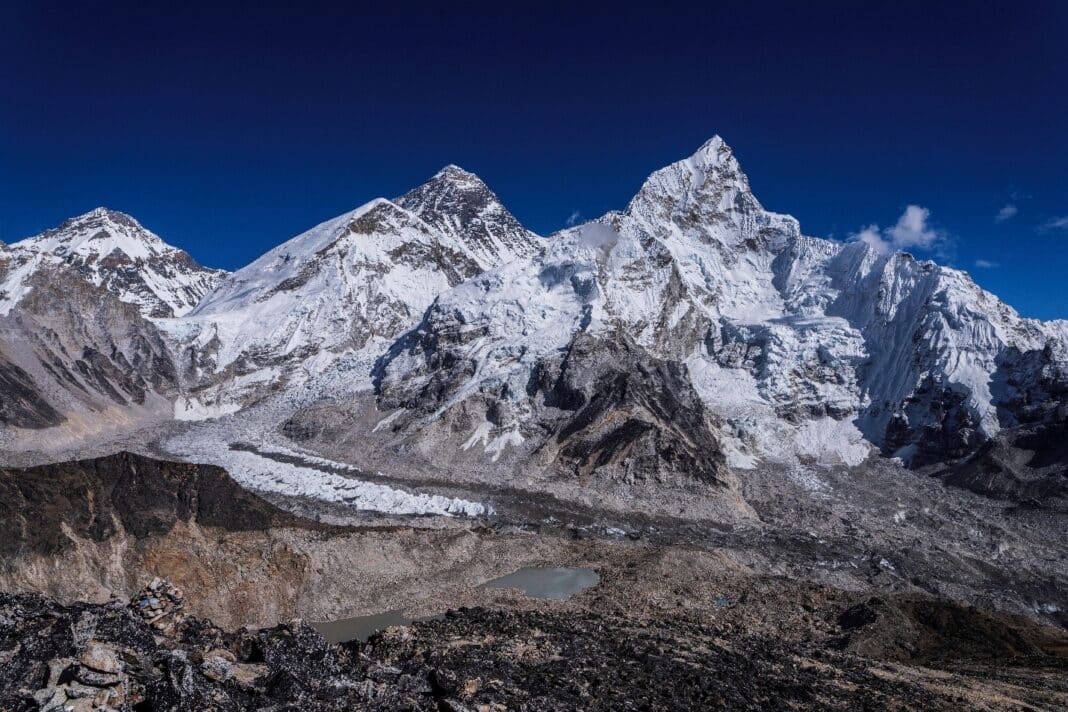How to Prepare for One of the World’s Best Adventures
The Everest Base Camp (EBC) trek is a bucket-list trip for numerous adventurers, drawing people from around the globe to the Himalayan heartland. It’s a hike that promises spectacular scenery, plenty of cultural immersion, and the chance to stand in the shadow of the world’s highest mountain. It’s no stroll in the park, though — preparation is what will make this life-changing experience comfortable and safe.
Whether you’re a first-time trekker or experienced on other mountains, this guide will get you ready for the trek’s difficulty level, physical and mental conditioning, packing, and how to stay healthy on the trail.
Understanding the Everest Base Camp Trek Difficulty Level
Before you book your flight or lace up your hiking boots, you need to know what makes this trek challenging — and rewarding.
Distance and Duration
The traditional Everest Base Camp trek is approximately 130 kilometres (around 80 miles) round trip, typically taken over 12 to 16 days. Hiking 5 to 7 hours daily on rocky, irregular trails is standard. The path snakes through isolated mountainous countryside, so there are no shortcuts or quick getaways — you’re locked into a consistent, sometimes exhausting, rhythm.
Altitude
The peak of the trek is Kala Patthar, at 5,545 meters (18,192 feet) above sea level, and Base Camp is at 5,364 meters (17,598 feet). At these heights, oxygen is at about half the quantity found at sea level, so every breath and every step is more exhausting.
Altitude is the most significant obstacle for the majority of trekkers. Your body needs time to acclimatize — to slowly get used to less oxygen. If you ascend too high too quickly, you risk Acute Mountain Sickness (AMS), which is sometimes mild but may be severe and even deadly.
Terrain and Weather
The trail is a mix of dirt track, rocky terrain, and stone steps carved into mountain sides. You’ll cross several suspension bridges spanning turbulent glacial rivers, walk through pine and rhododendron forest, and navigate narrow exposed ridges at high altitude.
Weather is unpredictable: warm and sunny in the lower valleys but freezing and windswept at the summit. Snow can fall even outside winter. You have to be ready for sudden changes.
Physical Demands
The trek is hard but non-technical mountaineering. No specialized equipment or technical climbing experience is required beyond decent boots and trekking gear. However, the cumulative impact of long daily walks, altitude, and backpacking (unless you hire a porter) requires good fitness and endurance.

How to Physically Prepare for the Everest Base Camp Trek
Physical condition is what will be the difference between just being able to finish and enjoying every step of this incredible journey. Here is how you can prepare months in advance:
Build Cardiovascular Endurance
Your lungs and heart need to be strong to keep you going for hours going upwards. To develop your aerobic fitness, you can run, swim, cycle, or walk briskly. Try to exercise 3-4 times a week at a minimum, increasing the intensity and duration.
Aim for a minimum of 45-60 minute sessions that mix steady-state cardio with interval training to simulate uphill effort.
Strengthen Your Legs
Your legs will be doing the majority of the work, so it’s essential to develop strength and stamina here. Squats, lunges, step-ups, and calf raises are all exercises that help to develop muscle and joint strength.
Backpacking on uneven trails with a weighted pack, if possible, is ideal preparation — it’s the closest to actual trail conditions and can help to prevent injuries.
Develop Core Stability and Balance
A strong core helps with posture and balance on uneven paths, reduces fatigue, and injury chances. Add planks, Russian twists, yoga, or Pilates to your routine.
Balance training on unstable surfaces (e.g., a Bosu ball or balance board) is also great for mountain trails that are rocky.
Practice Hiking
Do some trial treks on local trails with elevation gain and irregular terrain. Start with shorter treks, then gradually increase distance and intensity.
Use your trekking boots and pack to get used to the gear you’ll be using. This also breaks in your boots to minimize blisters.
Mental Preparation: The Key to Success
The Everest Base Camp trek is both a mental and physical challenge. The days are lengthy, sometimes monotonous, and altitude will sap your energy and excitement.
Patience
Altitude will see you moving slower than expected. Relocate to it early to limit frustration.
Flexibility
Weather delays, crowded trails, or teahouse availability can upset plans. Flexibility allows you to enjoy the journey despite setbacks.
Resilience
Tough days, sore muscles, and cold nights test your resolve. Keep your goal in mind and celebrate small successes.
Mindfulness
Allow what is — the breathtaking scenery, cultural exchange, and the peaceful mountain atmosphere. Developing a positive mindset and learning stress-reducing techniques like meditation or slow breathing can enhance your experience.

Minimum Gear Requirements for the Trek: What to Pack
The right gear can make or ruin your trek. The following is a detailed packing list:
Footwear
Waterproof, sturdy hiking boots with cozy ankle support.
Trekking socks that are comfortable (wool or synthetic recommended).
Camp shoes or sandals for the evening.
Clothing
Layering is the most effective method for handling fluctuating temperatures:
Moisture-wicking base layers (top and bottom).
Insulating mid-layers such as fleece jackets.
Down or synthetic insulated jacket for cooler evenings.
Waterproof and windproof outer shell jacket and pants.
Warm hat, gloves, and neck gaiter or buff.
Sunglasses with UV protection.
Sunhat or cap at lower elevations.
Backpack and Accessories
A 30-40 liter backpack with padded straps.
Rain cover for your pack.
Sleeping bag rated to at least -10°C (14°F).
Trekking poles to minimize the stress on knees.
Headlamp with spare batteries.
Water bottles or hydration bladder.
Personal first aid kit (plasters, blister treatment, painkillers).
Sunscreen and lip balm (high SPF).
Toiletries and hand sanitizer.
Nutrition and Hydration: Fueling Your Body
Proper nutrition and hydration are essential to maintain energy and allow your body to adapt.
Eat well-balanced meals with complex carbohydrates (noodles, rice, potatoes), protein (lentils, eggs, meat), and fat.
Snack on energy bars, dried fruits, and nuts during the day.
Drink at least 3-4 liters of water a day; use water purification tablets or filters if refilling from natural sources.
Steer clear of alcohol and excessive caffeine because they dehydrate and also worsen altitude sickness.
Altitude Sickness: How to Recognize and Manage It
Altitude sickness, or Acute Mountain Sickness (AMS), occurs whenever your body has trouble adjusting to less oxygen.
Symptoms:
Headache
Nausea and vomiting
Dizziness or lightheadedness
Fatigue and weakness
Sleeping difficulty
If you experience severe symptoms like shortness of breath at rest, confusion, or inability to walk, descend immediately and seek medical care.
Prevention Tips:
Ascend gradually, including acclimatization days.
Stay hydrated.
Avoid exertion on arrival at high camps.
Consider medications like acetazolamide (Diamox) after consulting with your doctor.
Hiring Local Guides and Porters
Hiring Sherpa porters and guides at the local level not only enriches your trekking experience but also impacts the Himalayan communities directly. The professional guides have in-depth cultural understanding, ensure your safety, and take care of essential logistics so you can immerse yourself in the experience.
Porters attend to physical burden of equipment while you stroll comfortably and appreciate the stunning scenery of mountains everywhere. Professional, licensed personnel must be hired and ensured they receive due remuneration and training. Such thoughtful approach makes a more authentic and responsible tour experience in the high Himalayas.
What to Expect on the Trail: The Experience
Each day on the trail is a new chapter in an unfolding Himalayan epic, deep within Nepal’s Everest region. The mornings start with warm smiles, steaming mugs of tea, and the pale dawn light seeping over snow-sprinkled peaks in misty teahouses. Going out, you pass through fragrant rhododendron groves and up into mountain windswept alpine meadows and rocky ridge passes.
Suspension bridges oscillate high above glacial streams, prayer flags flutter in the wind, and the air becomes cooler as you ascend higher into the Sherpa country. In villages like Namche Bazaar, the vibrant cultural center of the Khumbu, you’ll walk past yak caravans, multicolored bazaars, and painted mani stones. You’ll pause at a stupa or spin a prayer wheel while locals pass by in subdued harmony with the mountains.
The trail concludes at mythic Everest Base Camp, where the mighty summit of Sagarmatha (Mount Everest) looms in grandeur, evoking awe and success. Children flag from rock-pitched homes, monks pray behind monastic walls that stand precariously atop hill summits, and every bend on the trail reveals another breathtaking vista. These are not trekking days — they’re spiritual, human moments entwined with Nepal’s high Himalayan sacred landscape.
Final Words: Embrace the Journey
The Everest Base Camp trek is a test of endurance, spirit, and humility. Preparation breeds confidence and safety, but the real magic is in surrendering to the mountain’s pace and your own limits.
Be kind to your body, respect the altitude, and revel in the little things. The trek will test you, but also reward you with lifetime views, friendships, and a deeper sense of nature and culture.
So take a deep breath, trust your training, and step on the trail that millions dream of — Everest Base Camp awaits.
This unforgettable trek is operated by Himalaya Heart Trek, a trusted and leading adventure company based in Z-Street, Thamel, Kathmandu, Nepal. With a strong reputation for quality and safety, you can find us on Google and TripAdvisor, or learn more at www.himalayaheart.com.
Author bio
Bikash Khanal is a full-stack developer and passionate travel blogger with a keen interest in mountain adventures. Aspiring to be a digital nomad, he enjoys sharing detailed travel guides and personal experiences to inspire others to explore the world’s most breathtaking peaks.

Guest Post Disclaimer
This blog post is a guest contribution and was written by an external author. The views and opinions expressed in this article are those of the guest writer and do not necessarily reflect the official policy or position of www.justonefortheroad.com
Sponsored Content Disclosure
This post was sponsored by www.himalayaheart.com. While the content has been provided by a third party, we strive to ensure that all sponsored posts align with the interests and values of our audience.


Nice clear guide — very helpful overview. Quick question: for someone with moderate fitness but no high-altitude experience, would you recommend adding extra acclimatization days in Namche or another stop, or is the standard 12–16 day itinerary usually safe? Also, any tips on hiring reliable porters locally? Thanks!
Absolutely! Even trekkers coming straight from sea level with moderate fitness complete the route successfully. The two acclimatization stops in Namche and Dingboche are normally enough for most people.
For guides and porters, the safest option is to hire through a trusted local company — that way you get licensed, insured, and experienced staff without any risk.